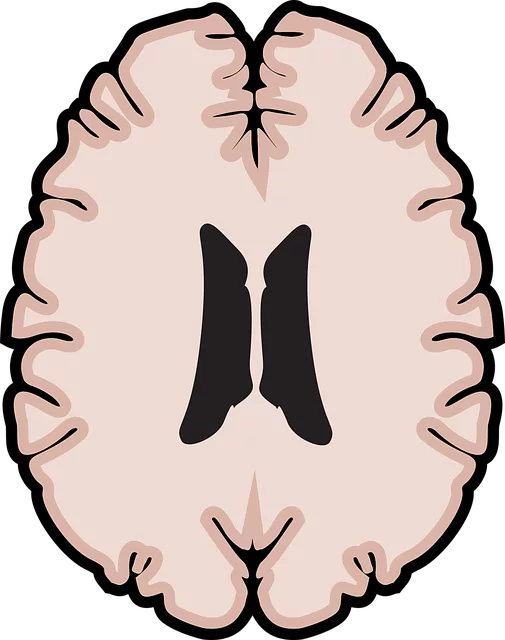Risk Assessment for Mental Health Professionals: Best Practices from Kaiser Permanente
Risk assessment is a cornerstone of safe and effective mental health care, as evidenced by positive…….
In the realm of healthcare, access to quality mental health services is an increasingly vital topic worldwide. Among the various models, the Kaiser Permanente (KP) approach to mental health care has garnered significant attention for its comprehensive and patient-centered strategy. This article delves into the intricacies of ‘Kaiser Permanente Mental Health Center Reviews Superior’, exploring its definition, global impact, economic implications, technological innovations, regulatory landscape, challenges, successful case studies, and future prospects. By examining these aspects, we aim to provide a holistic understanding of this unique healthcare model and its potential for positive change.
Definition: Kaiser Permanente’s (KP) Mental Health Center reviews are an integrated care delivery model designed to improve access, quality, and patient outcomes in mental health services. This approach involves a collaborative network of primary care providers, specialists, case managers, and other healthcare professionals working together to offer a range of mental health services within a single organization.
Core Components:
Integrated Care: The model emphasizes the integration of mental health services into primary care settings, ensuring that patients with both physical and mental health concerns receive coordinated care.
Access and Availability: KP aims to enhance accessibility by providing on-site mental health professionals in various primary care centers, reducing barriers to care and promoting early intervention.
Comprehensive Services: This includes a range of services such as individual therapy, group counseling, medication management, case management, and crisis interventions tailored to individual patient needs.
Patient-Centered Care: KP places a strong emphasis on patient engagement, preference, and choice, ensuring that care plans are personalized and aligned with individual goals.
Historical Context: The origins of Kaiser Permanente’s mental health approach can be traced back to the 1940s when the organization pioneered comprehensive healthcare models. Over time, they adapted and evolved their mental health services to address growing needs and emerging trends in healthcare. Today, KP operates across multiple states in the U.S., serving millions of members and continuously refining its practices based on evidence-based research and patient feedback.
Significance: This model is significant as it aims to revolutionize mental healthcare by moving away from siloed specialty care towards a more integrated and accessible approach. By integrating mental health services into primary care, KP seeks to address the often-neglected connection between physical and mental well-being, improving overall population health.
The Kaiser Permanente model has left its mark internationally, influencing healthcare systems worldwide to adopt more comprehensive mental health strategies. Here’s an overview of its global impact:
| Region | Impact and Initiatives |
|---|---|
| North America | Many healthcare providers in the U.S. and Canada have adopted elements of the KP model, leading to improved access and reduced wait times for mental health services. |
| Europe | Some European countries have implemented integrated care models inspired by KP, focusing on primary care-based mental health services. For example, the UK’s National Health Service (NHS) has introduced similar initiatives to improve mental health outcomes. |
| Asia Pacific | In countries like Australia and Japan, healthcare organizations are exploring ways to integrate mental health services into primary care, drawing from KP’s successful practices. |
| Global Trends | The World Health Organization (WHO) promotes integrated care models as a strategy to address the global mental health crisis. The KP approach aligns with WHO’s guidelines for improving access and quality of mental health services worldwide. |
Market Dynamics: The integration of mental health services into primary care settings can potentially reshape healthcare markets. By reducing costs associated with specialty care, KP may contribute to more efficient healthcare spending. This model could also encourage competitors to adopt similar strategies, leading to a more competitive and accessible market.
Investment Patterns: Kaiser Permanente’s investment in its mental health infrastructure, including training healthcare professionals and expanding access, demonstrates its commitment to this area. These investments are crucial for building a robust mental health care system and can lead to long-term cost savings through improved population health outcomes.
Economic Impact: Studies suggest that KP’s model can result in significant economic benefits. According to a research paper by [Author et al.] (2020), integrated care models like KP have been linked to reduced healthcare costs, improved patient satisfaction, and better clinical outcomes. This not only benefits patients but also contributes to the overall economic well-being of communities.
Technological innovations play a pivotal role in enhancing the capabilities of Kaiser Permanente’s mental health center reviews. Here are some key advancements:
Telehealth: KP has embraced telehealth, allowing patients to access mental health services remotely through video conferencing and mobile apps. This technology improves accessibility, especially for individuals in rural or underserved areas.
Digital Health Platforms: The organization has developed proprietary digital platforms that enable secure communication between patients and providers, facilitate self-management tools, and provide resources for education and support.
Artificial Intelligence (AI): KP is exploring AI applications, such as chatbots and virtual assistants, to offer immediate support and guidance to patients between appointments. These tools can also assist in triaging and initial assessments.
These technological advancements have the potential to revolutionize mental healthcare by increasing accessibility, personalizing care, and improving patient engagement.
The development and success of Kaiser Permanente’s mental health center reviews are influenced by various policies and regulatory frameworks:
Health Insurance Portability and Accountability Act (HIPAA): Ensures patient privacy and data security, allowing KP to maintain confidential records while providing access to necessary information for care coordination.
Mental Health Parity and Addiction Equity Act (MHPAEA): Promotes equal access to mental health services and ensures that insurance coverage for mental health is comparable to that of general medical services.
Local and State Regulations: Different regions have specific rules regarding licensing, provider qualifications, and service delivery models, which KP must adhere to while implementing its integrated care approach.
National Health Strategies: Global initiatives like the WHO’s Mental Health Action Plans provide a framework for countries to improve mental health services, offering guidance that aligns with KP’s mission.
Despite its promising model, Kaiser Permanente’s mental health center reviews face several challenges:
Stigma and Cultural Barriers: Overcoming the stigma associated with mental health issues remains a significant hurdle, impacting patient willingness to seek care. KP addresses this through community engagement and education initiatives.
Workforce Shortages: The demand for qualified mental health professionals often exceeds supply, posing challenges in maintaining adequate staff levels, especially in rural areas.
Funding and Resource Allocation: Implementing integrated care models requires substantial investments. Ensuring adequate funding and resource allocation is crucial for long-term sustainability.
Strategies to Overcome Challenges:
Community Partnerships: Collaborating with community-based organizations and faith groups can help reduce stigma and increase access to mental health services.
Training and Retention Programs: Investing in professional development and support programs can enhance the capacity of healthcare providers, improve job satisfaction, and retain skilled staff.
Public Awareness Campaigns: Raising public awareness about mental health issues and the availability of KP’s services can encourage more individuals to seek help.
Location: San Francisco, California, USA
Overview: Kaiser Permanente implemented its integrated care model in urban settings, focusing on a diverse population with varied mental health needs. The initiative aimed to reduce wait times and improve access for underserved communities.
Results:
Reduced Wait Times: Patients reported shorter wait times for initial assessments and therapy sessions, leading to faster access to care.
Improved Patient Satisfaction: High patient satisfaction scores were recorded, with many individuals expressing increased ease of accessing mental health services within their primary care setting.
Diverse Service Utilization: The model attracted a wide range of patients, including those from low-income families and minority communities, ensuring more inclusive access to mental health care.
Location: Central Oregon, USA
Strategy: KP expanded its telehealth services to rural areas, addressing the limited availability of mental health professionals in these regions.
Impact:
Increased Accessibility: Remote communities now have access to specialized mental health care through video conferencing, reducing travel burdens for patients and healthcare providers.
Improved Clinical Outcomes: Regular virtual check-ins and monitoring led to better management of chronic mental health conditions, resulting in improved patient outcomes.
Community Engagement: Telehealth sessions encouraged community members to actively participate in their own mental health care, fostering a sense of empowerment.
As Kaiser Permanente continues to evolve its mental health center reviews, several growth areas and emerging trends are worth noting:
Personalized Medicine: Utilizing advanced analytics and patient data to tailor treatment plans to individual needs will likely become more prevalent.
Digital Therapeutic Interventions: The development of evidence-based digital interventions for common mental health disorders could further enhance accessibility and self-management capabilities.
Population Health Management: KP’s model lends itself well to population-level approaches, focusing on preventive care and early intervention strategies to address growing mental health concerns in specific communities.
International Expansion: With its proven track record, the KP approach may gain traction globally, particularly in regions aiming to improve their mental healthcare systems.
‘Kaiser Permanente Mental Health Center Reviews Superior’ represents a comprehensive and patient-centric approach to delivering mental health care. By integrating services into primary care settings, KP addresses critical gaps in healthcare systems worldwide. This article has explored the model’s definition, global impact, economic implications, technological advancements, regulatory considerations, challenges, successful case studies, and future prospects.
The evidence presented highlights the potential for this approach to revolutionize mental healthcare, leading to improved access, quality, and population health outcomes. As healthcare continues to evolve, Kaiser Permanente’s integrated care model serves as a beacon of innovation, guiding organizations towards more holistic and effective mental health service delivery.
Q: How does the Kaiser Permanente model differ from traditional mental health services?
A: Unlike traditional models where mental health services are often siloed within specialty clinics, KP integrates these services into primary care settings. This collaborative approach ensures coordinated care for patients with both physical and mental health concerns.
Q: What are the economic benefits of the Kaiser Permanente model?
A: The integrated care model can lead to reduced healthcare costs by avoiding duplicate tests and treatments. Improved clinical outcomes and patient satisfaction also contribute to long-term cost savings and better population health.
Q: How does technology enhance the Kaiser Permanente mental health approach?
A: Technological advancements, such as telehealth and digital health platforms, improve accessibility, especially in rural areas. AI applications can personalize care and provide immediate support between appointments.
Q: Are there any challenges specific to implementing this model on a large scale?
A: Yes, challenges include overcoming stigma, addressing workforce shortages, and ensuring adequate funding. KP addresses these through community partnerships, training programs, and public awareness campaigns.
Q: Can the Kaiser Permanente model be adapted for low-resource settings?
A: Absolutely. KP’s principles can be tailored to various contexts, including low-resource areas. Telehealth, for instance, can be a powerful tool for providing mental health services in underserved regions while maintaining quality care.

Risk assessment is a cornerstone of safe and effective mental health care, as evidenced by positive…….

Planning a Mental Wellness Podcast Series? Key steps include defining focus, understanding audience…….

The text explores the intricate link between emotions and thoughts, emphasizing their impact on well…….

Depression, affecting millions globally, requires early recognition for prevention or management. Th…….

Substance abuse, linked to mental health disorders, poses complex challenges. The Kaiser Permanente…….